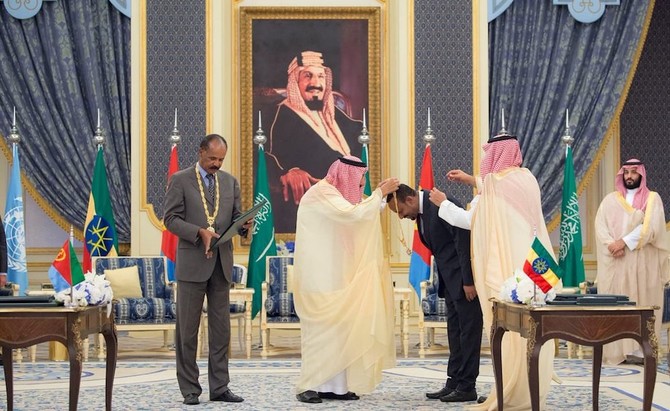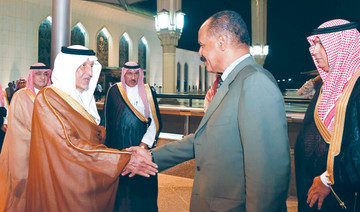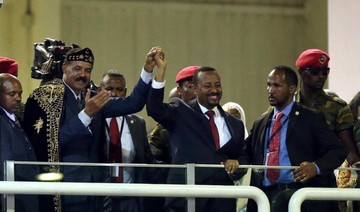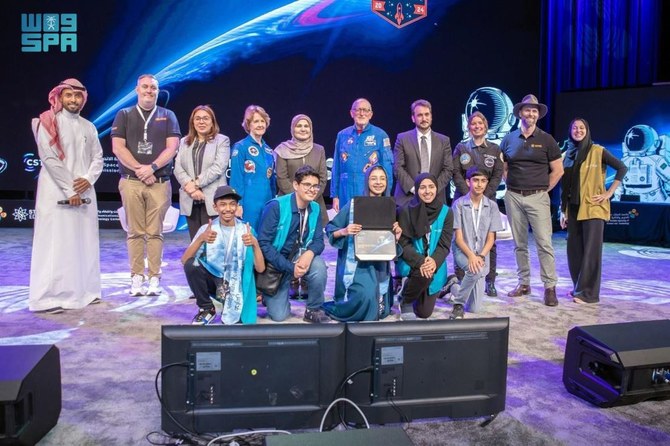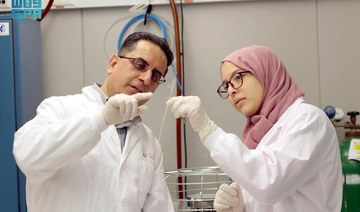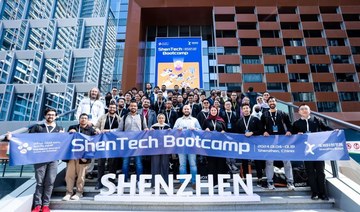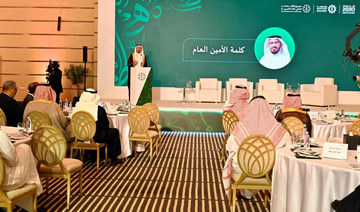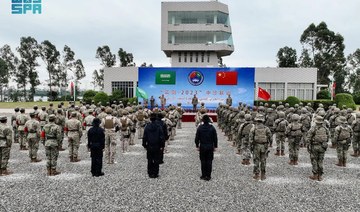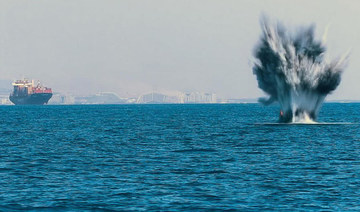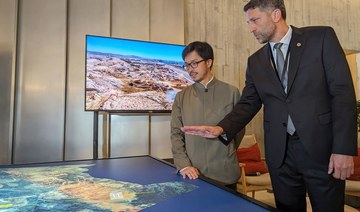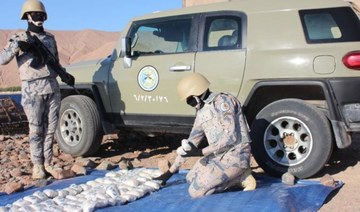JEDDAH: Eritrea and Ethiopia signed a peace deal on Sunday at a ceremony in Jeddah overseen by King Salman.
The agreement officially ends more than 20 years of war between the two countries.
Eritrean President Isaias Afwerki and Ethiopia's Prime Minister Abiy Ahmed signed the agreement after arriving in Jeddah on Saturday.
UN Secretary-General Antonio Guterres described the signing as an "historic event."
“I want to express my deep appreciation to the role played by His Majesty the Custodian of the Two Holy Mosques (King Salman) and by the government of Saudi Arabia for facilitating this agreement and contributing to bring together the parties,” he said.
The UN chief also paid tribute to “the courage, the vision, and the wisdom of the prime minister of Ethiopia, who had the capacity to overcome the resistance from the past and open a new chapter in the history of his country, and also the way the president of Eritrea responded to his peace initiatives.”
“This means that there is a wind of hope blowing in the Horn of Africa,” he conlcuded.
- @UN Secretary General @antonioguterres: "I want to express my deep appreciation to the role played by @KingSalman and #SaudiArabia's government of for facilitating the #Ethiopia #Eritrea peace agreement and contributing to bring the parties together"https://t.co/XVRNz4n65n pic.twitter.com/a77HZbSNRF
— Arab News (@arabnews) September 16, 2018
Saudi Arabia's Foreign Minister Adel Al-Jubeir congratulated King Salman and Crown Prince Mohammed bin Salman for bringing the two parties together.
"The Jeddah Peace Agreement signed today before the CTHM is a historic milestone for the peoples of Ethiopia and Eritrea and will contribute to strengthening security and stability in the region at large." he said.
The Jeddah Peace Agreement signed today before the CTHM is a historic milestone for the peoples of Ethiopia and Eritrea and will contribute to strengthening security and stability in the region at large pic.twitter.com/rkfUeP5rOw
— عادل بن أحمد الجبير (@AdelAljubeir) September 16, 2018
King Salman honored the two leaders with the Order of King Abdulaziz.
Ethiopia and Eritrea fought a bitter war from 1998 to 2000 over a border dispute that killed tens of thousands of people.
That conflict followed a war of independence against Ethiopia that led to Eritrea separating in the early 1990s.
The two countries signed an initial agreement in July and on Tuesday reopened land border crossings closed for 20 years.
The signing ceremony was attended by Guterres, Saudi Crown Prince Mohammed bin Salman and UAE Minister of Foreign Affairs and International Cooperation Abdullah bin Zayed Al-Nahyan.
The ceremony was attended by a number of Eritrean and Ethiopian officials.
------
READ MORE:
Timeline: Agreement in Jeddah ends hostilities between Eritrea and Ethiopia
Photos: Ethiopia and Eritrea sign Jeddah Peace Agreement in Saudi Arabia
------
Earlier on Sunday, King Salman received both Afwerki and Ahmed at the Peace Palace in Jeddah.
The Eritrean president and Ethiopian prime minister attended the official reception ceremony, in which the national anthems of the two countries were played, along with the Kingdom’s national anthem.
King Salman also greeted the official delegations accompanying both countries.
King Salman then accompanied Afwerki and Ahmed, to the Royal Reception Hall at the Royal Court, where they shook hands with several Saudi dignitaries and senior officials.
The King also hosted a luncheon for the visiting delegations.
Earlier, the King received the Secretary General of the United Nations, Antonio Guterres, in his office at the Peace Palace in Jeddah on Sunday.
During the meeting, they reviewed developments in the international arena and various efforts aimed at achieving world peace and stability.
The meeting was attended by several Saudi officials, including Minister of Interior Prince Abdulaziz bin Saud bin Nayef, Foreign Minister Adel Al-Jubeir, and the Kingdom’s Permanent Representative to the UN Abdullah Al-Maalami.













